I am trying to plot a very big file (~5 GB) using python and matplotlib. I am able to load the whole file in memory (the total available in the machine is 16 GB) but when I plot it using simple imshow I get a segmentation fault. This is most probable to the ulimit which I have set to 15000 but I cannot set higher. I have come to the conclusion that I need to plot my array in batches and therefore made a simple code to do that. My main isue is that when I plot a batch of the big array the x coordinates start always from 0 and there is no way I can overlay the images to create a final big one. If you have any suggestion please let me know. Also I am not able to install new packages like "Image" on this machine due to administrative rights. Here is a sample of the code that reads the first 12 lines of my array and make 3 plots.
import os
import sys
import scipy
import numpy as np
import pylab as pl
import matplotlib as mpl
import matplotlib.cm as cm
from optparse import OptionParser
from scipy import fftpack
from scipy.fftpack import *
from cmath import *
from pylab import *
import pp
import fileinput
import matplotlib.pylab as plt
import pickle
def readalllines(file1,rows,freqs):
file = open(file1,'r')
sizer = int(rows*freqs)
i = 0
q = np.zeros(sizer,'float')
for i in range(rows*freqs):
s =file.readline()
s = s.split()
#print s[4],q[i]
q[i] = float(s[4])
if i%262144 == 0:
print '\r ',int(i*100.0/(337*262144)),' percent complete',
i += 1
file.close()
return q
parser = OptionParser()
parser.add_option('-f',dest="filename",help="Read dynamic spectrum from FILE",metavar="FILE")
parser.add_option('-t',dest="dtime",help="The time integration used in seconds, default 10",default=10)
parser.add_option('-n',dest="dfreq",help="The bandwidth of each frequency channel in Hz",default=11.92092896)
parser.add_option('-w',dest="reduce",help="The chuncker divider in frequency channels, integer default 16",default=16)
(opts,args) = parser.parse_args()
rows=12
freqs = 262144
file1 = opts.filename
s = readalllines(file1,rows,freqs)
s = np.reshape(s,(rows,freqs))
s = s.T
print s.shape
#raw_input()
#s_shift = scipy.fftpack.fftshift(s)
#fig = plt.figure()
#fig.patch.set_alpha(0.0)
#axes = plt.axes()
#axes.patch.set_alpha(0.0)
###plt.ylim(0,8)
plt.ion()
i = 0
for o in range(0,rows,4):
fig = plt.figure()
#plt.clf()
plt.imshow(s[:,o:o+4],interpolation='nearest',aspect='auto', cmap=cm.gray_r, origin='lower')
if o == 0:
axis([0,rows,0,freqs])
fdf, fdff = xticks()
print fdf
xticks(fdf+o)
print xticks()
#axis([o,o+4,0,freqs])
plt.draw()
#w, h = fig.canvas.get_width_height()
#buf = np.fromstring(fig.canvas.tostring_argb(), dtype=np.uint8)
#buf.shape = (w,h,4)
#buf = np.rol(buf, 3, axis=2)
#w,h,_ = buf.shape
#img = Image.fromstring("RGBA", (w,h),buf.tostring())
#if prev:
# prev.paste(img)
# del prev
#prev = img
i += 1
pl.colorbar()
pl.show()
